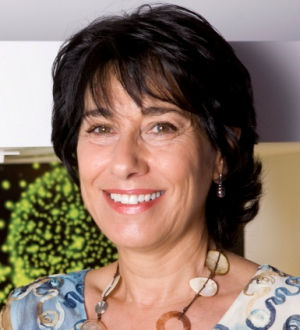Reseña
Medical doctor and cell biologist. Her field of research is endocrinology, molecular biology of development and pathophysiology of the nervous system. Her main research, both in the group she leads and in her work as a university professor, has focused on the role of proinsulin/insulin, as well as on the development and degeneration of the nervous system, especially at the level of the retina.
Biografía
Born in Salamanca on 25 February, 1952, she graduated in Medicine and in Psychology at University of Salamanca, in 1975. She studied for the boards between 1976 and 1978, in the Endocrinology Section of the Clinical Hospital of the University of Salamanca and, in 1979, she specialised in Internal Medicine and Endocrinology. Between 1980 and 1982 she worked at the National Institute of Health in Bethesda, Maryland (USA), in the field of diabetes. Throughout her later career, much of her research, as well as directed theses, will deal with insulin. Between 1982 and 1984, she returned to Spain, where she worked as an associate physician in the endocrinology service at the Santa Creu i Sant Pau Hospital in Barcelona. She would continue supervising projects for the hospital until 1989, despite returning to Bethesda in 1984, USA, to work in the Cellular and Developmental Biology Laboratory until 1986 and, specifically, in the field of diabetes, from 1987 to 1991.
In 1990 she joined the CSIC (Spanish National Research Council) in Madrid, until 2003. Between 2007 and 2008, she was General Director of the Carlos III Health Institute of the Ministry of Health and Consumer Affairs.
In addition to carrying out these research tasks, she has been teaching since 1979 in different Spanish universities, such as University of Salamanca, Complutense University of Madrid, Autonomous University of Madrid, and University of Alcalá. In these universities, she acts as professor and director of doctoral courses and different theses.
She was one of the founders, in 2001, of the Association of Women Researchers and Technologists, an association of which she was president between 2001 and 2007.
She founded a technology company, Proretina Therapeutics, in 2007 in order to develop clinical therapies, especially to protect retinal neurodegeneration, although this company closed in 2018 due to a lack of investors.
Throughout her career, she has received numerous awards and distinctions, and she is the co-author of over 140 research articles, the most relevant being those that investigate proinsulin, regenerative medicine of the retina, and developmental biology.
She lives in Madrid and is currently a professor at the CSIC in the Department of Molecular Biomedicine at the CIB.
